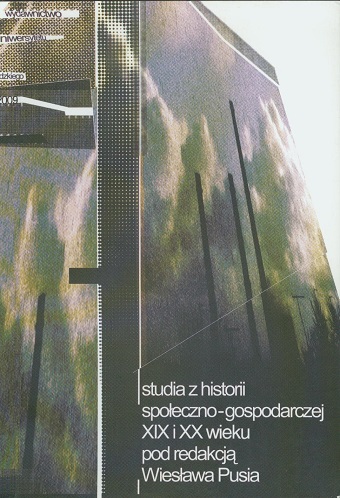Wpływ rosyjskiej polityki protekcyjnej na sytuację gospodarczą Królestwa Polskiego w latach 1877–1914
DOI:
https://doi.org/10.18778/2080-8313.06.09Abstrakt
Protection policy was established in 1877 after the fiasco of the 20 year period of progressive liberalisation policy, forwarded by the then Minister of the Treasury Michał Rejtern. In 1877, when deciding on customs, Russian Treasury used fiscalism, but the success of this particular solution caused a shift to protective and prohibitive policy. Russians wanted an independence from import, at the same time developing production, output of resources and agriculture used for the industry in the Russian Empire. After the change of the economical doctrine in 1877, the Kingdom of Poland’s market became attractive to the foreign capital investments. The investments, however, took place only in those sectors of economy which were included in the Russian government’s protective policy. The instruments of protective policy, such as customs and differential tariffs caused an increase of investments in many branches, contributing to theirs development. The development in the chemical industry, heavy industry and even in some of the branches of agriculture was especially dynamic.
The protective policy was more favourable to the heavy industry in southern Russia than to the great ironworks in Kingdom of Poland. This, however, was related to the fact that iron ore layers in Krivoy Rog were common and had significant quantity of iron while layers in Częstochowskie were too small to suffice even for the needs of the ironworks of Sosnowiec–Częstochowa industrial district, whereas Świetokrzyskie layers had too low content of iron and contained many impurities. Additionally, Russia did not develop heavy industry in the Ural Basin, either. Without the protective policy, however, the rapid development of the heavy industry branches (metallurgy, mining and metal machine industry) would have been impossible in the Kingdom of Poland. The extension of protective policy into the cotton industry resulted in imposing of high tariffs on cotton from the southern states of USA and Egypt. The enterprises from Kingdom of Poland were forced to buy cotton from central Asia and Transcaucasus. It increased the costs of textile industry; the export to the peripheral markets of Russian Empire, however, would not have been possible in that scale without the tariffs and the development of the textile branch in Kingdom of Poland might not have been as significant as it was. In general, Russian custom policy had positive influence on affluence of investments of foreign capital into many branches of Kingdom of Poland’s industry, contributing to its dynamic upgrowth.
Pobrania
Opublikowane
Jak cytować
Numer
Dział
Licencja

Utwór dostępny jest na licencji Creative Commons Uznanie autorstwa – Użycie niekomercyjne – Bez utworów zależnych 4.0 Międzynarodowe.









